Collaborating with aquarium construction specialists from the outset of design and planning is the best way to sidestep painful problems that burn up time and money later.
It’s never too early to collaborate with experts in aquarium construction and operation when designing a new aquarium.
More often than not, engaging specialists from the outset will save money, reduce rework, accelerate project delivery, lower energy consumption, improve animal welfare and create a facility suited to the needs of its stakeholders.
Here’s why –
Aquariums are not just architecturally impressive vessels for animal exhibiting. They uphold fragile living ecosystems and simulated natural-habitats populated by thousands of creatures. They also often serve as hospitals for animals injured in the wild, breeding facilities for endangered species and research facilities for scientists and conservationists.
More than an exercise in balancing space-utilisation, aquarium designers must cater for relationships between front-of-house and back-of-house facilities that are vital to the aquarium’s success. The size, location, design and connectedness of areas allocated for life support systems, animal care and quarantine, food preparation, access corridors and waste management are crucial design-points.
Below we highlight seven dimensions of aquarium design often overlooked when aquarium specialists are not engaged early in the design of new aquariums:
1. ALL’S WELL THAT SMELLS WELL
Aquariums have two distinct odours; a mild fragrance barely noticed front-of-house, and a denser smell found mainly back-of-house. It pays to keep these smells apart.
Front-of-house spaces are largely odour-free and held at a comfortable temperature and humidity using air conditioning.
Back-of-house air is exposed to the water, feeding activity and in some cases animal poo, such as from penguins.
Reliance on air conditioning to maintain two separate air quality parameters is excessively expensive and could increase the aquarium’s environmental footprint.
Instead, it is smart to keep humidity and odours away from the front-of-house areas by ensuring that the building itself – and the ventilation and air conditioning systems in particular – keeps air flowing from front to back of house.
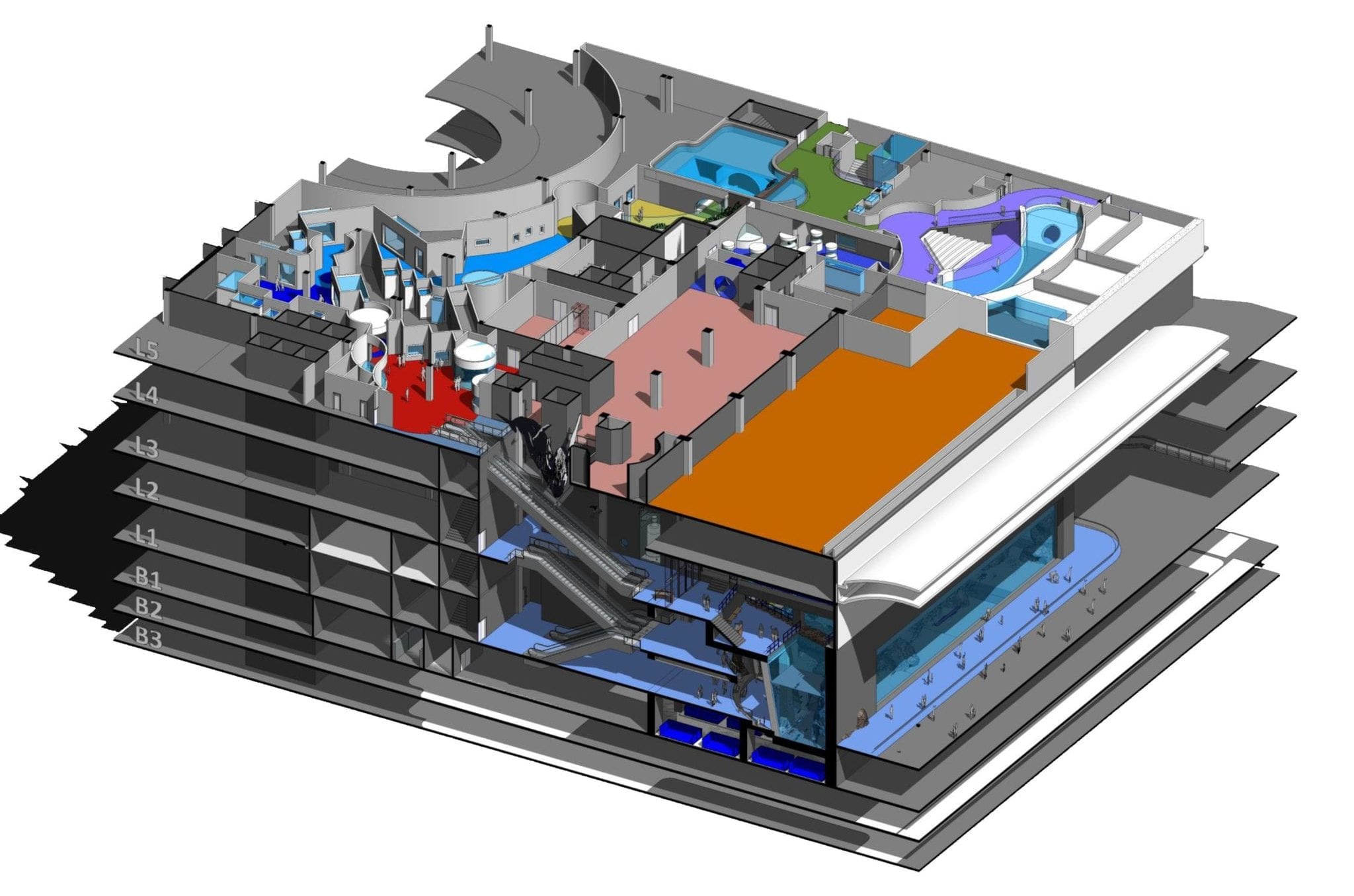
Air-Quality Management Considerations
Tropical ocean tanks are held at 24-26 degrees Celsius and are up to 7 times more saline than standard residential saltwater swimming pools. The air around these tanks is warm, humid and distinctly scented.
Aquariums contain billions of invisible creatures – it’s bacteriological population. These microscopic critters are vital to the health of the ecosystem and contribute to its natural aroma.
The food that aquarium inhabitants enjoy does not smell appealing to humans. Bigger species consume substantial amounts of very smelly meals every day. Food needs to be stored, prepared, and moved through service corridors. Along the way, only the animals will find a whiff appetising.
Animals go to the loo. Some, like fish, only do so in the water, whereas as others, like penguins and seals, make land-based deposits too. Rockwork above the waterline is regularly washed. Life support systems can easily clean two million litres of water or more every hour. Even so, the pong of marine poo definitely delivers the wrong kind of visitor experience.
2. GRAVITY CHECK
Unlike the back-of-house facilities in museums, entertainment centres and art galleries, aquarium life support systems operate 24/7/365 to maintain water quality and keep the animals alive.
Because it is continuously cleaned, the water in a mid-sized 2 million litre tank will pass through its life support equipment over 8,700 times every year. That is the equivalent of moving more than 17 billion litres of water annually – enough to fill 7,000 Olympic swimming pools. Whenever possible, it pays to use gravity instead of electricity, to move water around an aquarium.
Designing pump-driven water systems necessitates precise calculations of pressure, elevation, friction, and velocity; factors greatly affected by the placement of tanks and life support systems relative to each other.
If the life support system is below the tank, significant energy may be needed to pump the water back to the tank after filtering. Considerable power may also be required to pump water to life support equipment located above the tank.
Sound facility design also helps avoid so-called ‘double-pumping’, which occurs when water is pumped from the tank, between various LSS equipment and back again.
Locating life support systems far away from the tanks consumes further energy, because the longer the pipe, the higher the effect of friction.
When AAT is engaged in the process early, we strive to locate life support-systems in positions that maximise the use of gravity to move water through life support systems. Not only does this reduce energy bills, but it is also more environmentally friendly.
“Whenever possible, it pays to use gravity instead of electricity, to move water around an aquarium.”
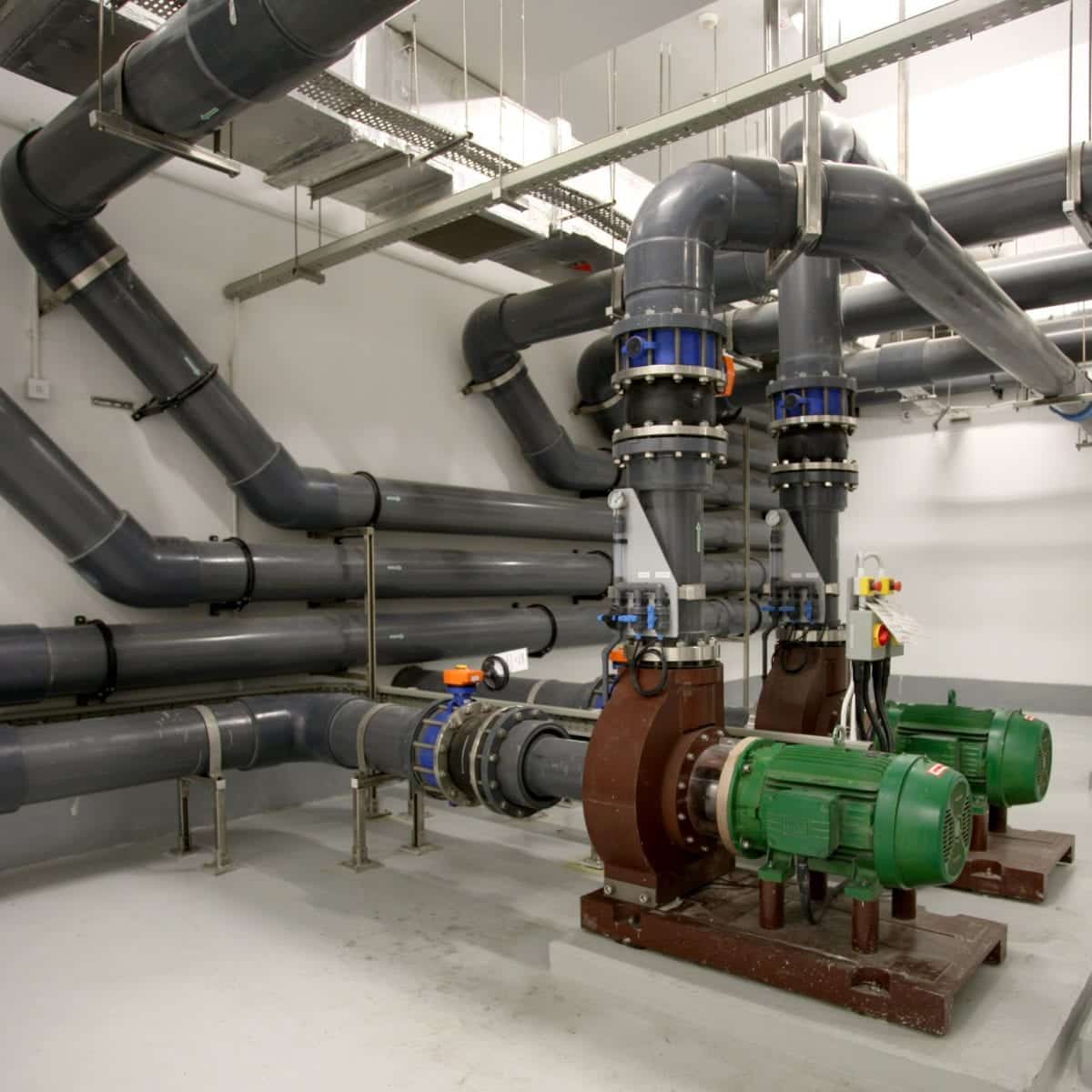
3. CATER FOR WEIGHT
Water is heavy.
Every cubic meter weighs a tonne – more if it is saline because saltwater is denser than freshwater. A mid-size 2,000,000 litre aquarium weighs more than three dozen M1 Abrams battle tanks.
Architects and construction specialists are familiar with engineering specifications for large and heavy structures: no problem there.
Even so, elevated structures may need careful design-stage attention to manage the loads placed on buildings by heavy tanks without creating unnecessary cost and complexity during construction.
“A mid-size 2,000,000 litre aquarium weighs more than three dozen M1 Abrams battle tanks.”
Aquariums are also increasingly recognised as an excellent addition to shopping malls. They engage and attract visitors and help evolve malls into destinations with leisure and entertainment facilities too. When designing the aquarium for a shopping mall, it is crucial to remember that a five-meter-tall cylinder of water weighs 5 tonnes per square meter at its base. This weight would likely be beyond the strength-limitations of a standard retail-space foundation. The same phenomenon applies when introducing aquariums into hospitals, airports and many other public spaces.
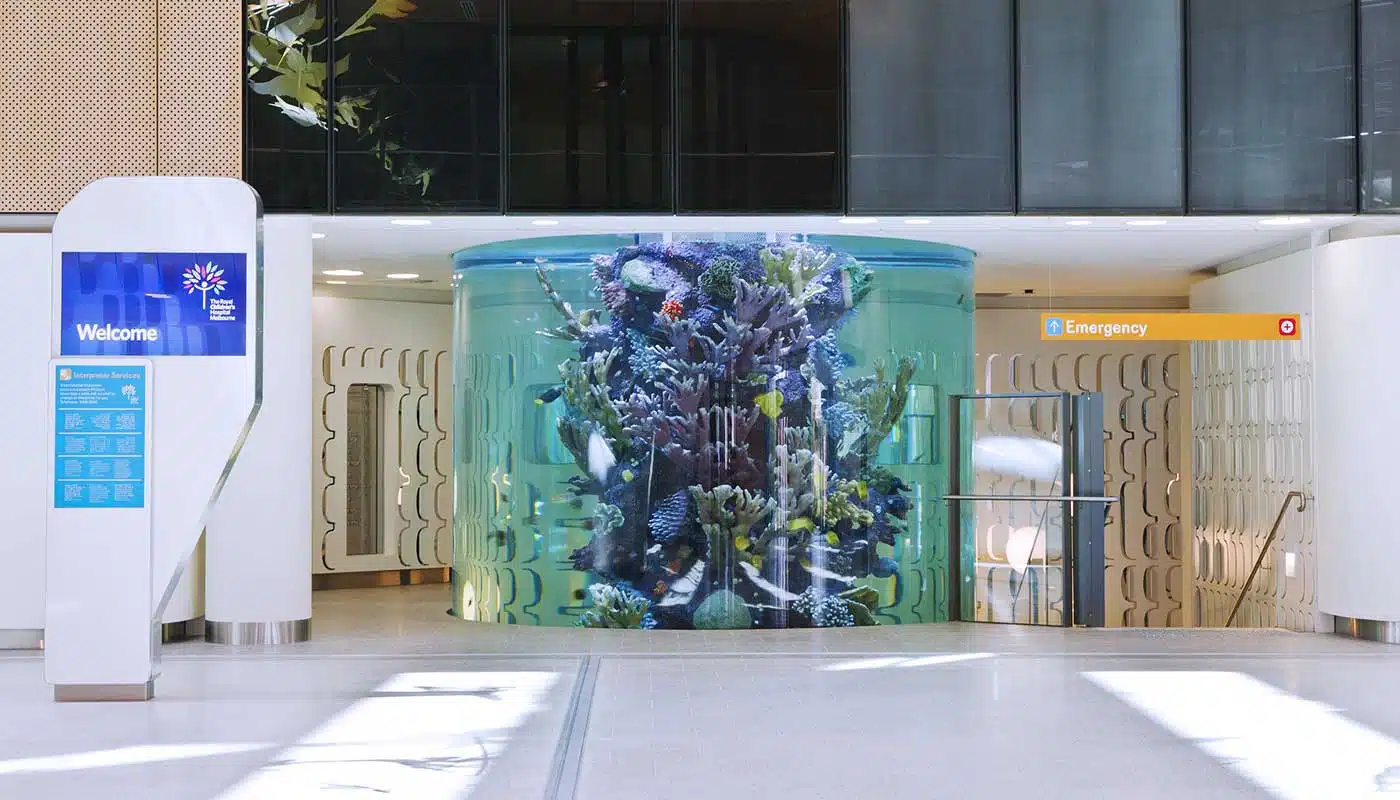
4. CAST THE RIGHT LIGHT
Building a new aquarium is an excellent opportunity to create uplifting and iconic architecture that rejuvenates run-down areas and attracts visitors to a city, region, or country.
While the architecture is vital and heroic, the focus inside an aquarium should shift naturally from the building to the animals.
The most intimate and spectacular viewing areas for aquarium exhibits typically use heavily subdued lighting. Darkened rooms add drama and create a sense of discovery as if visitors are walking through the animals’ secret kingdom.
Therefore, it is best to avoid building designs that channel heaps of daylight deep into the building if it ends up interfering with the animal-viewing experience.
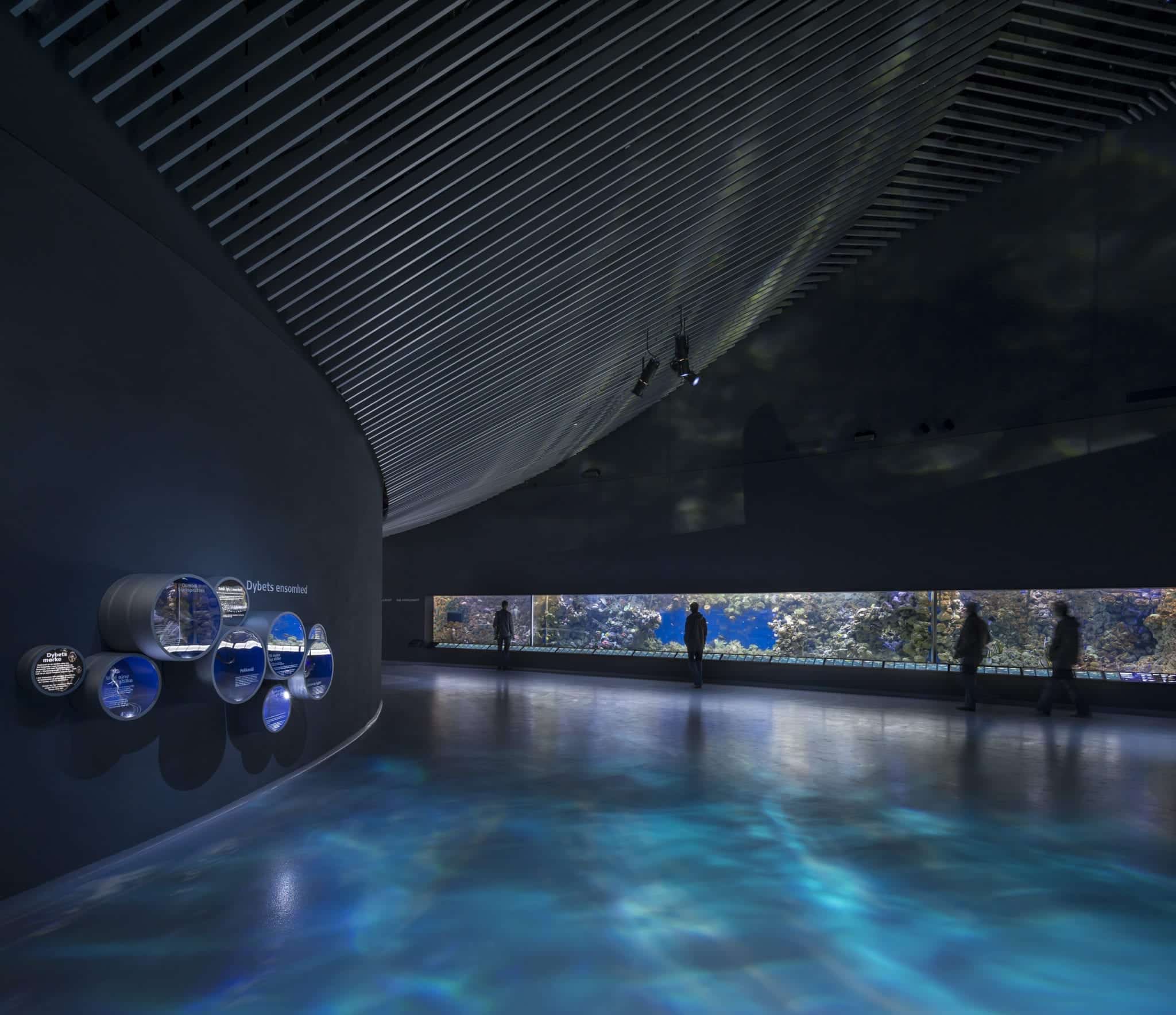
5. IT SOUNDS RIGHT
Sound travels faster through water than air – because water is denser – and comes in many forms. One sound that no-one wants to hear in an aquarium is the vibration of water pumps.
Low-noise, low vibration pumps mounted on dampening devices do much to reduce noise pollution. Using gravity to move water helps too. Ultimately, however, there is a lot of water to move around an aquarium and pumps are not yet silent.
Continuous exposure to even low-level noise is an Occupational Health and Safety concern. So, back-of-house areas with many pumps may need to be closed-off, to protect the hearing of nearby employees.
Designs must also be mindful of protecting aquatic animals against vibrations caused by pumps. In an extreme case, vibration from water pumps could interfere with the natural geolocation capabilities of species like dolphins.
These considerations can be accommodated comfortably during the design phase. Things become much harder after the concrete has been poured and cured.
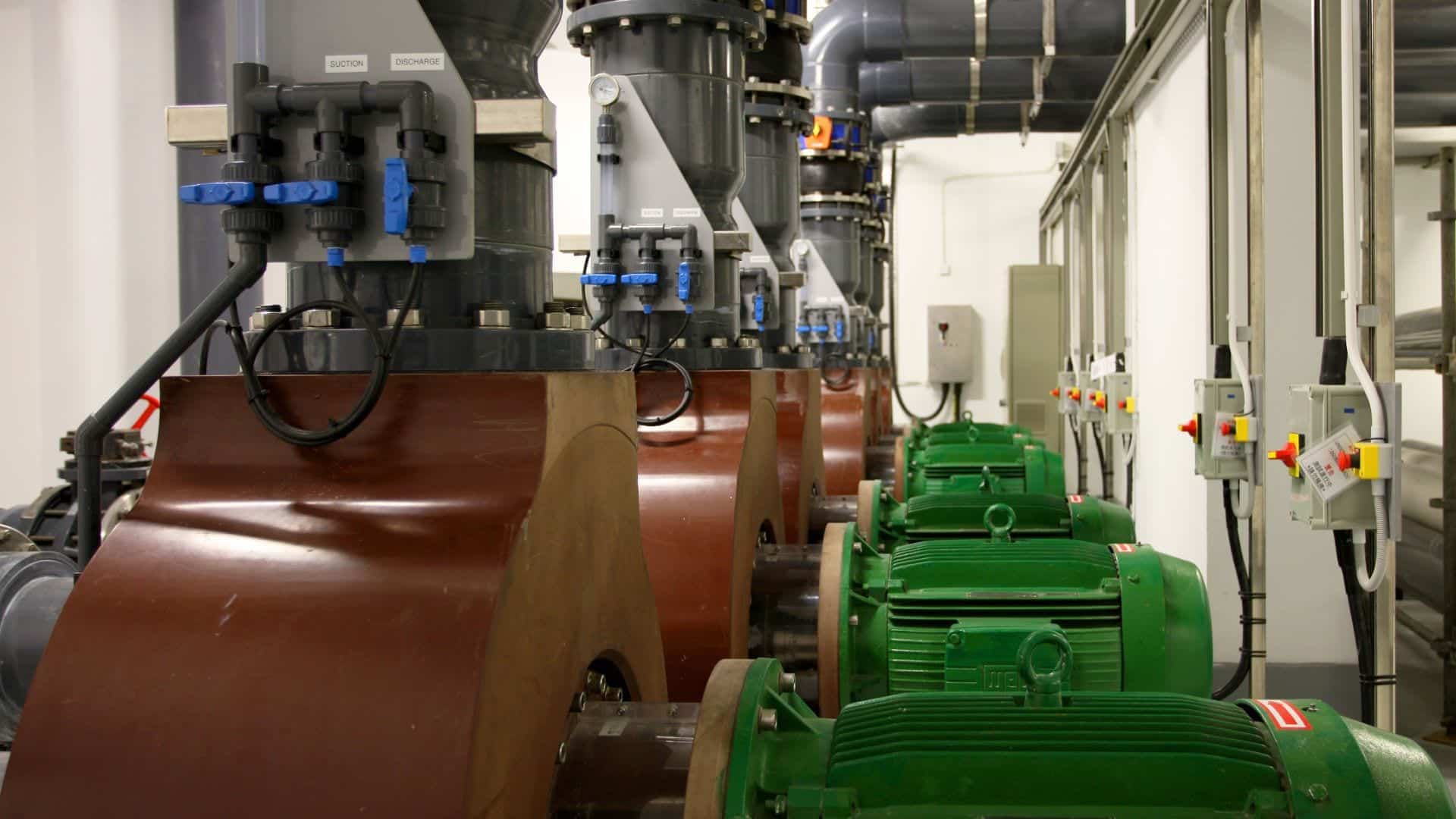
6. A GREAT SPACE TO WORK
In recent years, the use of sensors and automated control systems has made it possible to manage life support systems and water quality with far less direct human intervention. Still, a mid-to-large aquarium could employ 50-100 staff (full time, part-time and casual) and many will interact directly with plant and equipment in back-of-house spaces.
Great talent is hard to find, so it pays to keep employees happy and motivated in their work.
Experienced aquarium specialists know what it is like to work in and operate an aquarium. Early collaboration with experts helps designers create work-spaces that meet the needs of skilled workers, which allows new aquariums to attract and keep the best people.
Space allocated to life support systems, quarantine, research and breeding are also working zones for skilled employees.
7. ACRYLIC: A VIEW TO BEHOLD
Nothing has a more profound effect on visitor experiences than the size and creativity of acrylic viewing panels, domes, tunnels, and cylinders.
The industry continues to break new records for the size of main-tank windows. Acrylic tunnels that once gained height by resting on hip-high walls now extend down to the floor. Viewing domes have expanded from slightly larger than a child’s head to masterpiece under-water ceilings inspired by ancient cathedrals.
Architects interested in taking aquarium design to entirely new levels have much to gain from collaborating with acrylic manufacturers. Design-phase access to creative engineers with expertise in the physical properties of acrylic and extensive production know-how can play a huge role in breaking new ground.
IN SUM
There is a lot more to designing a successful aquarium than creating an award-winning building. Early access to aquarium construction specialists and acrylic-manufacturing expertise is the perfect pathway to delivering a profitable and high-performing aquarium on time and budget with fewer headaches along the way.
DISCLAIMER
The information in this article is general in nature and does not constitute professional advice and is not intended to be a substitute for such advice and should not be relied upon as such. You should consider whether the information is appropriate for your needs. The article and any associated content published are bound by the terms and conditions of use. The terms and conditions of use of AAT’s website can be found here.